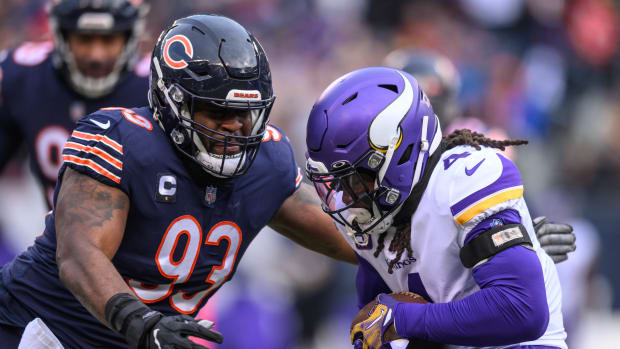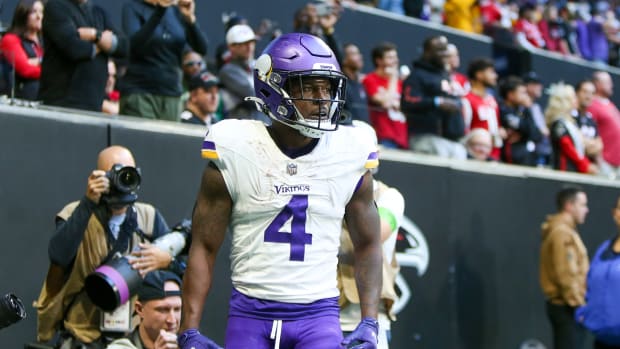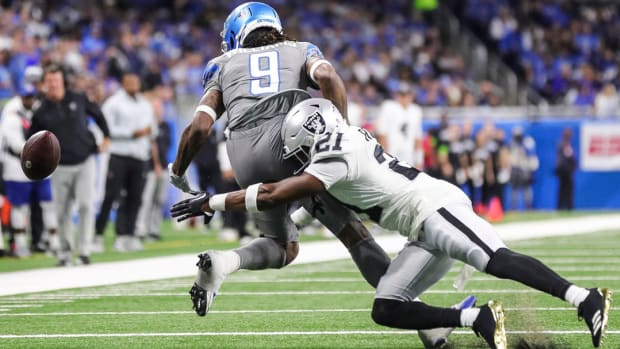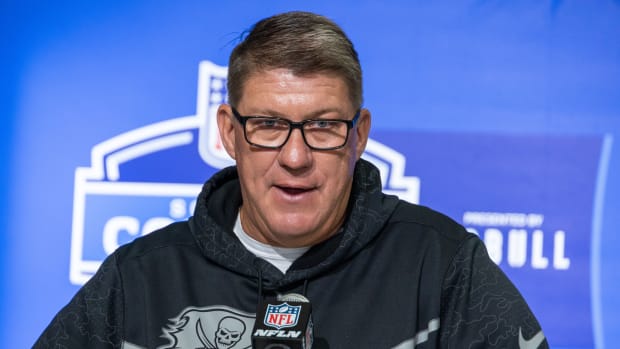Why Ryan Fitzpatrick, Jets won’t find a better fit by parting ways
Your teams on the go or at home. Personalize SI with our new App. Install on iOS or Android.
After a season in which they posted double-digit wins for the first time since 2010, the Jets are once again in a position they have come to know well over the few decades: quarterback limbo. Coming off a career year, incumbent starter Ryan Fitzpatrick has yet to re-sign with New York, putting in doubt an agreement that everyone just assumed would eventually get done once free agency opened over two months ago.
The Jets have offered Fitzpatrick a three-year, $24 million contract with $15 million guaranteed that could grow to $36 million with incentives and would pay him $12 million in 2016. That $8 million per year base average would net him more than Andrew Luck (for now), Robert Griffin III and this year’s top draft picks, Jared Goff and Carson Wentz. It would place him below such “superstars” as Nick Foles, Sam Bradford and Colin Kaepernick, but it would provide him with relative stability in a good situation late in his career (Fitzpatrick is 33).
An undrafted free agent out of Harvard, Fitzpatrick has bounced around the NFL for a decade and for the most part has never been more than a second-tier QB—the kind of guy you start until your real starter is healthy, or until the quarterback of the future shows up, or until you realize that you gave him too much money and need to release him.
Where Sam Bradford’s game needs to grow to earn the Eagles’ trust
That changed in 2015. With the Jets, Fitzpatrick established career highs in yards (3,905) and touchdowns (31) after being reunited with offensive coordinator Chan Gailey, who had been his head coach in Buffalo from ’10 through ’12. Brandon Marshall and Eric Decker represented the best duo of receivers Fitzpatrick had ever had at his disposal, and Chris Ivory and Bilal Powell added a strong run game (a pretty big deal for a guy who uses play-action as much as Fitzpatrick does) on top of above-average protection from the offensive line.
Based on the Jets’ current quarterback situation, Fitzpatrick does have some leverage. Geno Smith has been uneven at best throughout his short NFL career. The second-round selection of Penn State’s Christian Hackenberg was widely seen as a fairly severe overdraft. Former Baylor star and 2015 fourth-round pick Bryce Petty recently revealed that he only recently realized he could diagnose defensive fronts, an epiphany that came to him while playing Madden.
So, there’s the impasse. Fitzpatrick probably believes that he’s worth more on the open market based on his 2015 season, and that the Jets are trying to lowball him based on his longer history of average play. The Jets probably believe that they presented Fitzpatrick with an ideal situation for which he should be grateful.
Based on the tape I watched, I think both sides have a point. The odds are low that Fitzpatrick can find a better situation than what he has in New York, and there’s no question he’s the best option the Jets have for 2016—if he chooses to make himself available.
The tape makes it clear: It’s in everybody’s best interest to work this out.
• KLEMKO: Jets are lowballing Fitzpatrick | Coaches with the most to prove
#http://www.120sports.com/video/v181221782/should-fitzpatrick-take-deal
The Plays
In Bill O’Brien’s system as the Texans’ starter in 2014, Fitzpatrick was at his best when he was presented with quick, easy reads and didn’t have to diagnose and react to pressure. When he was pressured, Fitzpatrick would often hurry his throws or sling them from an uneven base, but after he was reunited with Gailey last season, I saw him diagnosing things more clearly, reacting more consistently and progressing through his reads as he should.
Can the NFL escape the depths of its own corruption?
Fitzpatrick threw three touchdown passes against the Patriots in New York’s Week 16 win, and his second touchdown to Marshall on the day was a good example of what he can do with a clean pocket, advantageous receiver splits and a target physical enough to beat tight coverage. Marshall moved from outside left to the slot, and cornerback Logan Ryan followed him inside. Marshall ran a stutter-go route as Ryan followed him downfield, then handed him off to safety Duron Harmon. Frozen at first by Marshall’s foot fake, Harmon caught up to him at the end zone, but Marshall put a great inside move on him to get open for the ball. Fitzpatrick had time to make a great deep throw, and the Jets had themselves a 33-yard touchdown. As Fitzpatrick thinks about his future earning potential, as is his right, he may also want to consider what having targets like this tends to do for a quarterback’s future winning potential.
And if that play doesn’t do it, Fitzpatrick should remember this touchdown pass against the Redskins in Week 6. This 35-yard touchdown pass should be counted as a 35-yard touchdown reception, because Marshall made it happen with his physicality, awareness and ball skills. This throw was a return to the old Fitzpatrick. Under pressure, he pre-determined his read to Marshall along the right sideline despite the fact that cornerback Bashaud Breeland had Marshall dead to rights in coverage—or so he thought. Marshall recognized the underthrown ball, passed Breeland to come back to the ball, and made a fingertip catch near the turf. Then, he turned, eluded both Breeland and safety Dashon Goldson and romped into the end zone. When you have teammates skilled enough to pull you past your own limitations, that’s a serious net gain.
This third play is the last touchdown pass of Fitzpatrick’s 2015 season, and to me, it shows how much he developed in this system. He’s got an empty backfield, and the pocket breaks down rather quickly. But instead of making a rushed mistake, Fitzpatrick stepped up in the pocket, waded through the pressure and diagnosed that Decker had beaten safety Corey Graham up the middle deep. Graham stumbled, and the five-receiver set had spread the Bills’ defense out, so it was a great combination of scheme and execution.
There’s also the matter of Fitzpatrick’s relationship with Gailey, which has benefited both men whenever they’ve worked together, but the scales have certainly tipped in Fitzpatrick’s favor through the years.
“It’s just one of those deals that we can talk to each other,” Gailey said in January. “He’s open-minded; I hope I’m open-minded. And I think that there’s a trust factor there between the two of us that allows us to get along, maybe better than some other coordinator-quarterback relationships that exist.”
Fitzpatrick agreed, adding that the communication was easier than ever down the stretch.
“It is unspoken,” he said. “I think there’s definitely an understanding just with how we’ve been together and kind of knowing each other.”
Gailey was the head coach when the Bills signed Fitzpatrick to a six-year, $59 million contract extension with $24 million guaranteed in 2011, and Fitzpatrick didn’t exactly live up to it. In his four seasons with the Bills, he completed 59.8% of his passes and threw 80 touchdowns to 64 interceptions in 55 games and 53 starts. The season after he signed that deal, he led the NFL with 23 interceptions, then put together perfectly average stints with the Titans and Texans before signing with the Jets.
QBs with the most to prove in 2016
As Manish Mehta of the New York Daily News pointed out Tuesday morning, the incentives that would inflate Fitzpatrick’s contract are most likely unreachable fluff. That’s true of most NFL contracts. It’s also true that Fitzpatrick is being offered high backup money after a fine season, which he may well consider an insult. But he’s had his turn at the trough of big-time quarterback money and didn’t earn it. No one can tell Fitzpatrick what to do with his money and his career, but it’s short-sighted on Fitzpatrick’s part to ignore the fact that in this particular situation, his leverage lies on the field with the Jets. It’s also silly for the Jets to pretend they have a legitimate alternative if he heads elsewhere. This is a situation in which neither side will be as good in 2016 without the other, so it’s time to drop the rancor and agree to a deal that admits as much.

















































